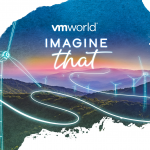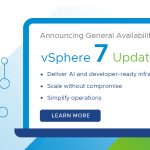vSphere’s 6.5 release has brought about many new features and enhancements. One of the features which may have flown under the radar has to be the vSphere Command-Line Interface (vCLI) 6.5 release.

Overview
As a high-level overview, vCLI allows users to run commands from remote systems against vSphere environments. Examples of such commands would be ESXCLI, Datacenter CLI (DCLI), vifs, vicfg, and so forth. To put it another way, vCLI allows users to run all of the commands available within the vSphere Management Assistant (vMA) on a system with an operating system (OS) of their choosing. This is important because it allows users to maintain their own patching levels and apply their own security policies.
ESXCLI Improvements
ESXCLI features a plethora of new commands! ESXCLI now has the ability to work with FCOE adapters and NICs, managing NIC queuing and coalescence, configuring USB pass-through settings, handing all kinds of settings for NVMe devices, and also administering vSAN’s iSCSI configuration. Some examples:
- esxcli device driver list
- esxcli fcoe adapter remove
- esxcli fcoe nic enable
- esxcli graphics device stats list
- esxcli graphics host get
- esxcli hardware usb passthrough device enable
- esxcli hardware usb passthrough device list
- esxcli network multicast group list
- esxcli network nic queue filterclass list
- esxcli network nic queue loadbalancer list
- esxcli nvme device list
- esxcli nvme device firmware activate
- esxcli nvme device firmware download
- esxcli nvme device log error get
- esxcli software vib signature verify
- esxcli storage vmfs reclaim config get
- esxcli system coredump vsan get
- esxcli system wbem get
- esxcli vsan iscsi homeobject get
- esxcli vsan iscsi status get
DCLI Additions
DCLI features quite a few new commands as well. DCLI’s commands have been extended to include monitoring and management of the VCSA in many areas such as networking, appliance health and access, performing backup and restore actions, and viewing appliance based information like uptime and version. Another area of improvement involves areas within the vCenter system such as gathering additional information regarding datacenters, networks, folders, hosts, clusters and so forth. Lastly, VM management has also been greatly bolstered to help manage a VM’s lifecycle. Some examples:
- appliance monitoring
- appliance vmon service
- appliance networking interfaces
- appliance networking dns servers
- appliance health load
- appliance health system
- appliance health storage
- appliance health softwarepackages
- appliance access ssh
- appliance recovery backup
- appliance recovery restore
- appliance system uptime
- appliance system version
- vcenter datacenter
- vcenter network
- vcenter folder
- vcenter vm hardware
- vcenter vm power
- vcenter vm hardware memory
- vcenter vm hardware cpu

Keep an eye out for an upcoming post about how to get started using DCLI in your own environment!
Supported Operating System Enhancements
There has also been some additional OS support added for the following versions:
- Ubuntu 15.10 (LTS) – 64-bit
- Ubuntu 16.04 (LTS) – 64-bit
- Windows 10 (64-bit)
Please note that if Windows is the chosen OS for installation, a new pre-requisite has been added in the form of needing to install either ActivePerl or Strawberry Perl version 5.14 or later.
More Information and Download
For more information on changes made in vSphere CLI 6.5, including improvements, security enhancements, and deprecated features, see the vSphere CLI 6.5 Release Notes. For more information on vSphere CLI 6.5 usage including concepts and examples, see the vSphere CLI 6.5 Concepts and Examples documentation. For more information on specific commands, see the vSphere CLI Reference.
You can find the vSphere CLI 6.5 download HERE. Get it today!












